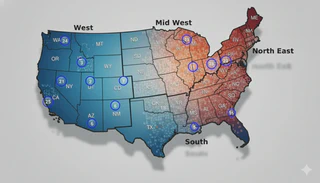Spatiotemporal modeling of Substance Abuse Disorders

As a core part of my PhD research, I led this national-level epidemiological assessment of the U.S. substance use disorder (SUD) crisis. I analyzed over a decade of CDC mortality data to characterize the “micro-epidemics” driving the national trend. My work involved developing novel spatiotemporal statistical models to identify not just where the epidemic was clustered (in the West and Mid-west), but who was most vulnerable.
To deconstruct this complex crisis, I engineered advanced statistical models to quantify the hidden community-level and individual risks driving overdoses. Then, I identified the geospatial clustering to pinpoint the epidemic’s true epicenters across the U.S. Finally, I built spatiotemporal models to represent the data, revealing not just where the hotspots were, but how they were accelerating and spreading over time.
The models revealed a sharp, emerging surge in the Black male population and quantified a 39% increase in mortality risk for every additional average day of mental distress, resulting in a new, high-resolution understanding of the epidemic, enabling a “Know Your Epidemic, Know Your Response” strategy. Resulting in 3 main actionable outcomes:
Identified Emerging Threats: The models confirmed that while White males had the highest overall mortality, they also detected a recent and alarming 104% surge in mortality among Black males since 2014, identifying a rapidly emerging vulnerable population.
Quantified Community-Level Risk: I translated vague concepts like “community health” into hard numbers. The models showed that just one additional average day of mental distress per month in a county could increase the relative risk of an overdose death by 39%.
Created an Actionable Map: Instead of a simple map of overdose rates, I delivered a detailed risk map that identified major, distinct hotspots in the Midwest (Ohio, KY, WV) and the Southwest (CA, AZ, NM). This allows public health officials to stop guessing and allocate resources—from naloxone access to mental health support—directly to the populations and locations that need them most.
This work was published in the high-impact journal PLOS ONE and was featured in U.S. News & World Report and ScienceDaily as a guideline for designing and targeting public health interventions.